MediaTek Dimensity 7050
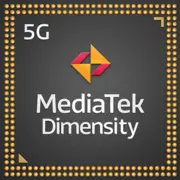
MediaTek Dimensity 7050: Balancing Performance and Energy Efficiency in Mid-2025
April 2025
In the world of mobile technology, the choice of processor is a fundamental aspect that defines the smartphone experience. The MediaTek Dimensity 7050, introduced in early 2024, continues to maintain its position in the mid-range market, offering a balanced combination of power and battery life. In this article, we will explore what makes this SoC noteworthy, who it is suitable for, and how it compares to its competitors.
1. Architecture and Technology Process: 6 nm and Hybrid Core Structure
The MediaTek Dimensity 7050 is built on a 6-nanometer process from TSMC. While this is not the most advanced process in 2025 (compared to 4-nm and 3-nm chips), it provides a good balance between performance and power consumption.
CPU: 8-Core Configuration
- 2× Cortex-A78 clocked at up to 2.6 GHz: responsible for resource-intensive tasks (gaming, video rendering).
- 6× Cortex-A55 clocked at up to 2.0 GHz: optimized for background processes and energy efficiency.
This hybrid structure (2+6) allows for load distribution: powerful cores engage when launching applications, while energy-efficient cores support multitasking.
GPU: Mali-G68 MP4
The graphics accelerator with four compute units supports:
- Resolution up to 2520×1080 pixels (Full HD+).
- HyperEngine 5.0 technology for optimizing gaming performance (stable FPS, reduced latency).
- API Vulkan 1.3, OpenGL ES 3.2.
TDP (Thermal Design Power): 4 W
Low power consumption is a key advantage. The chip hardly heats up under moderate loads, simplifying the cooling system in smartphones.
2. Real-World Performance: Gaming, Multimedia, and AI
Gaming
The Mali-G68 MP4 is not a top-tier GPU, but it is sufficient for medium settings in 2025:
- Genshin Impact: 35–40 FPS on medium settings.
- Call of Duty: Mobile: 60 FPS in HD mode.
- Honkai: Star Rail: 45 FPS with dynamic resolution.
For smooth gaming, device optimization is essential: smartphones with passive cooling may exhibit throttling after 20–30 minutes of gameplay.
Multimedia
- Support for HDR10+ and Dolby Vision for content on streaming services.
- Video encoding/decoding: 4K@60 FPS (H.265, AV1).
- Audio: 32-bit/384 kHz DSP for sound enhancement.
AI Applications
The integrated APU 3.0 (AI Processing Unit) accelerates:
- Photo processing (noise reduction, autofocus with object recognition).
- Video modes (stabilization, real-time HDR).
- Voice assistants (background command analysis).
Power Consumption
The average operating time of a smartphone with a 5000 mAh battery is 10–12 hours with mixed usage (social media, video, calls). In power-saving mode, it can last up to 18 hours.
3. Built-in Modules: Connectivity and Navigation
5G Modem
- Sub-6 GHz with frequency aggregation (up to 2.77 Gbps).
- Support for VoNR (voice calls over 5G).
Wi-Fi and Bluetooth
- Wi-Fi 6E (up to 3.6 Gbps) with improved stability in crowded networks.
- Bluetooth 5.3 with LE Audio (support for multi-stream audio).
Navigation
- GPS (L1+L5), GLONASS, Galileo, QZSS.
- No satellite communication support (like in the iPhone 16 or Huawei Mate 70).
4. Comparison with Competitors
MediaTek Dimensity 7050 vs Snapdragon 7 Gen 2
- Snapdragon 7 Gen 2: higher GPU performance (Adreno 710 vs. Mali-G68), but more expensive.
- Dimensity 7050: better energy efficiency (4 W vs. 5.5 W).
Exynos 1380 (Samsung)
- Similar scores in Geekbench 6, but Exynos is less optimized for gaming.
Previous Generation: Dimensity 1080
- Dimensity 7050 is 18% faster in multi-core tests and 12% more energy efficient.
5. Use Cases: Who Is This Chip For?
- Gaming: suitable for casual games but not for AAA titles at ultra settings.
- Daily Tasks: social media, browsing, streaming — everything runs smoothly without lag.
- Photo and Video: shoots in 4K, but for professional shooting, flagship devices are preferred.
- Long Battery Life: ideal for users who value battery longevity.
6. Pros and Cons
Pros:
- Low power consumption.
- Support for Wi-Fi 6E and Bluetooth 5.3.
- Affordable device pricing ($300–$500).
Cons:
- Mali-G68 MP4 is weaker than Adreno in Snapdragon.
- No mmWave 5G support.
7. Practical Tips for Choosing a Smartphone
- Cooling: look for models with vapor chambers or graphite layers.
- RAM: a minimum of 8 GB for gaming and multitasking.
- Display: AMOLED with a refresh rate of 90–120 Hz to enhance interface fluidity.
- Model Examples: Realme 12 Pro, Xiaomi Redmi Note 14, vivo V30 Lite.
8. Conclusion
The MediaTek Dimensity 7050 is an optimal choice for those seeking a "no-compromise" smartphone in the mid-range segment. It is suitable for:
- Students: long battery life and smooth app performance.
- Travelers: accurate navigation and support for global 5G networks.
- Casual Gamers: stable performance in mobile games.
The main benefits include a combination of price, battery life, and sufficient power for most tasks. If you do not need ultra settings in games or professional photography, the Dimensity 7050 will be a reliable companion for 2–3 years.
Prices in this article are accurate as of April 2025. Devices based on the Dimensity 7050 are available in the range of $300–$500 in new condition.
Basic
6x 2 GHz – Cortex-A55
GPU Specifications
Connectivity
Memory Specifications
Miscellaneous
Benchmarks
Phones with Dimensity 7050
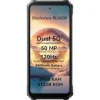

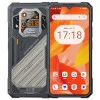
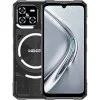

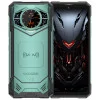

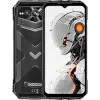
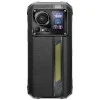

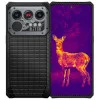
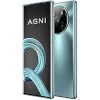
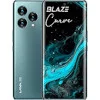
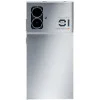




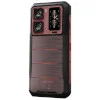
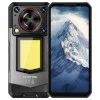
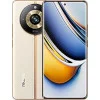

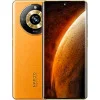
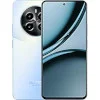
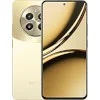
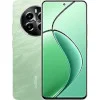
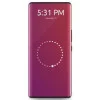
Tablets with Dimensity 7050
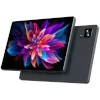

Comparison of Devices with Dimensity 7050
Compared to Other SoC
Share in social media
Or Link To Us
<a href="https://cputronic.com/en/soc/mediatek-dimensity-7050" target="_blank">MediaTek Dimensity 7050</a>


